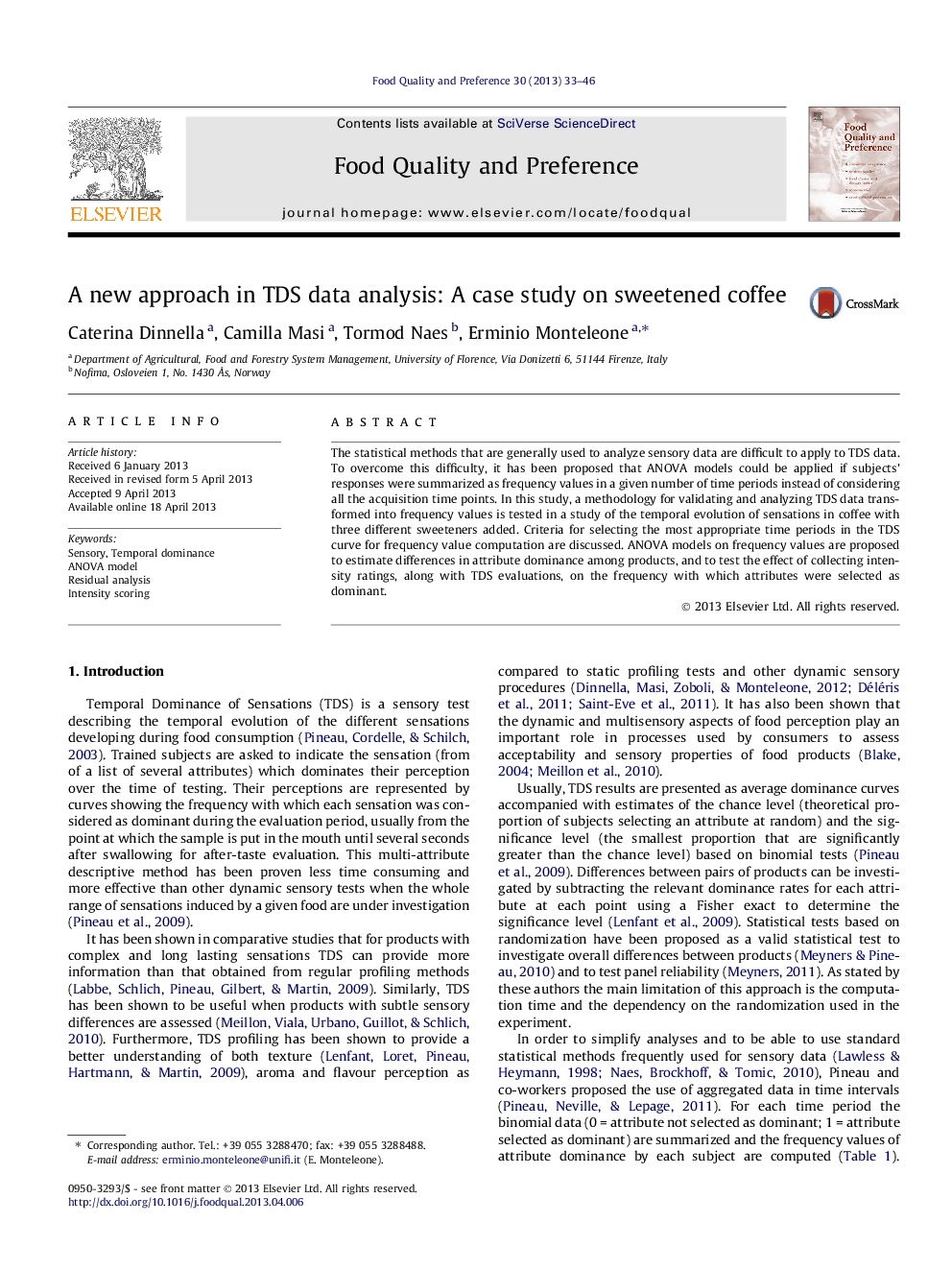| Article ID | Journal | Published Year | Pages | File Type |
|---|---|---|---|---|
| 4317324 | Food Quality and Preference | 2013 | 14 Pages |
Abstract
The statistical methods that are generally used to analyze sensory data are difficult to apply to TDS data. To overcome this difficulty, it has been proposed that ANOVA models could be applied if subjects' responses were summarized as frequency values in a given number of time periods instead of considering all the acquisition time points. In this study, a methodology for validating and analyzing TDS data transformed into frequency values is tested in a study of the temporal evolution of sensations in coffee with three different sweeteners added. Criteria for selecting the most appropriate time periods in the TDS curve for frequency value computation are discussed. ANOVA models on frequency values are proposed to estimate differences in attribute dominance among products, and to test the effect of collecting intensity ratings, along with TDS evaluations, on the frequency with which attributes were selected as dominant.
Keywords
Related Topics
Life Sciences
Agricultural and Biological Sciences
Food Science
Authors
Caterina Dinnella, Camilla Masi, Tormod Naes, Erminio Monteleone,
